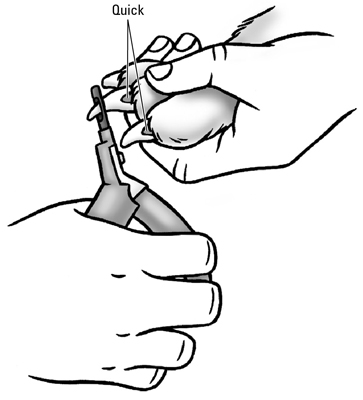Beagles are a relatively low-maintenance canine, at least when it comes to grooming. But just because the Beagle has a wash-and-wear coat doesn't mean that she doesn't need regular grooming.
Basic grooming
Regular grooming not only improves your bond with your animal, it also gives you the opportunity to spot problems before they get out of hand. A regular grooming routine will usually consist of
Brushing: A thorough brushing once or twice a week is crucial to keep your Beagle's coat and skin healthy. The brushing action stimulates the natural oils in the skin and helps to reduce the amount of hair that your Beagle would otherwise shed on your carpets, furniture, or clothes.
Inspecting: Pick up each foot and wiggle each toe, feel the footpads, and then gently examine and rub each ear.
Getting your Beagle used to having these tender areas touched will make it easier for your vet to treat him if he gets injured.
Pest control: Apply a pest-control product if necessary. The vet can help you find the best product for your area, but the product you choose should cover ticks, fleas, and worms.
If you do find fleas, you'll need to bath him a flea-killing shampoo and use a flea comb to comb away the critters. If you find a tick, put on some gloves and use a set of tweezers to gently pull the tick straight off the dog. Clean the wound with a dab of shampoo and then rinse. Follow up with a dab of rubbing alcohol.
Bathing: Bathe monthly unless your dog gets into some disgusting. Be sure that you use a shampoo and conditioner designed for dogs. Human shampoo and conditioners have the wrong ph balance for dogs.
It helps to dilute your shampoo with three or four parts of water for every unit of shampoo. This will help the shampoo lather up and rinse more easily.
Cleaning the eyes: Keeping your Beagle's eyes clean is a snap; you only need to do it when you see little eye crumbs at the inner corners. Just gently wipe the inner corners with a cotton ball or cloth.
If you see any goopy, or colored discharge in the eye or a change in the general appearance of the eye, take her to the vet as soon as you can. She might have a serious eye problem.
Cleaning the ears: A Beagle's ear flaps are the perfect shape for harboring fungi and bacterial infections. Consequently, his ears need cleaning each week to keep them dry and infection free.
Squirt a bit of ear cleaner into the ear. Fold the flap over the ear and massage the base of the ear of one minute. Let her shake her head. Then clean the visible parts of the ear with a cotton ball. Repeat on the other side.
You can buy ear cleaner at a pet store, or you can make your own by mixing two parts water and one part white vinegar in squirt bottle.
Clipping: If your Beagle's nails need clipping, clip them. (They should be off the ground when she's standing still.) Ask your vet to show you how to clip your Beagle's nails. Your puppy will soon realize that it doesn't hurt—as long as you don't cut down too far.
If you clip nails frequently, the quick retracts out of the way. If you do clip the quick, you can use a styptic stick or even lip balm to help stop the bleeding.
 Be careful to avoid cutting the quick when you trim the nail.
Be careful to avoid cutting the quick when you trim the nail.Teeth: Brush your dog's teeth daily to keep her healthy all over. Use a soft toothbrush designed for dogs or children and doggie toothpaste. Just lift the dog's lips and gently brush the outer surface of the teeth.
Beagles also tend to have a problem with impacted anal sacs, which are located on either side of the anus, causing a very unpleasant odor. These anal sacs need be drained every six to eight weeks. Your vet or your groomer can drain the anal sacs for you, or you can have them teach you how to do it yourself.

